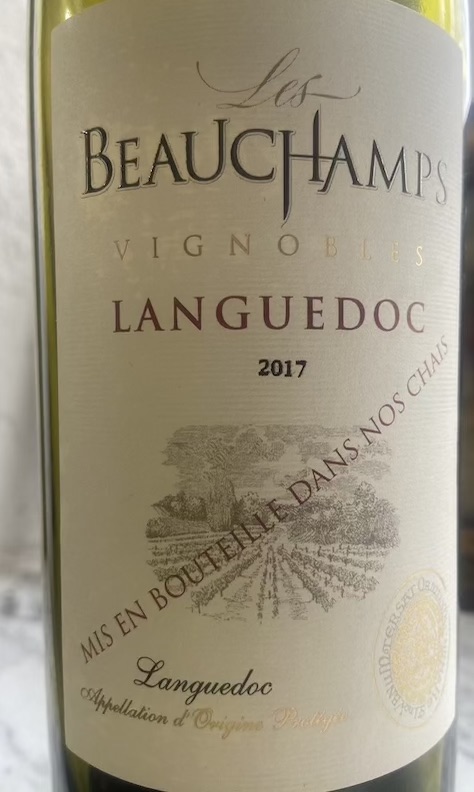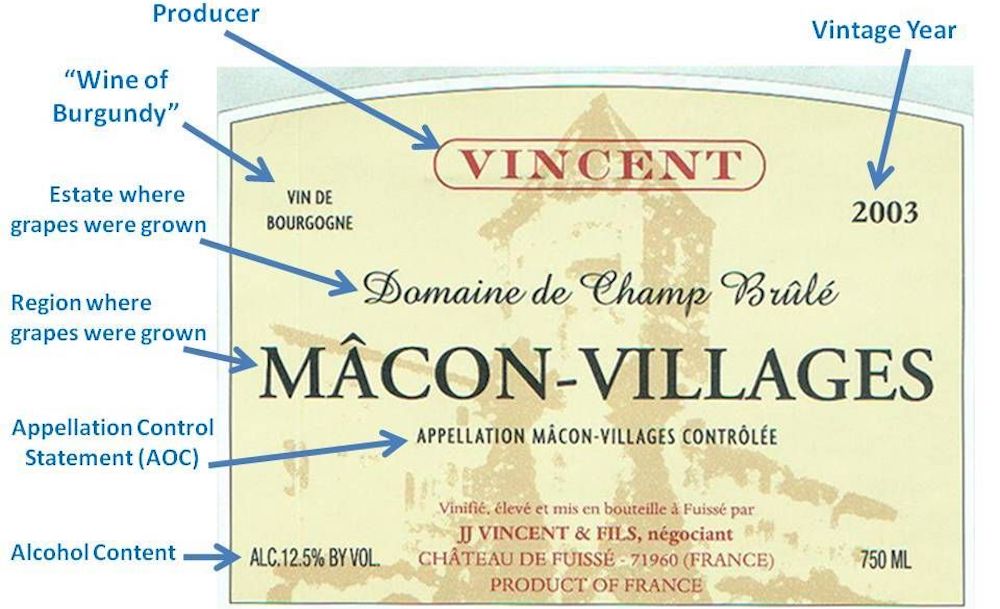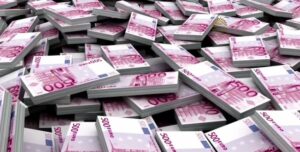(Editor’s note: This is Pt. 1 in a two-part tutorial meant to help you read a French wine label like a connoisseur. You can see Pt. 2 here with even more helpful insights into the mysteries of French wine.)
Nobody likes to feel disoriented when selecting wine. And when it comes to French wine, sorting out the label can be quite disconcerting.
Even the vocabulary is a challenge. How do you say “Yquem” anyway, as in Chateau d’Yquem, the wildly expensive Sauterne? My French spouse read the word for me: “E-kem” (kem as in “chem-istry” he assured me). For years, I said “Keeem.” I felt like a big dummy.
Which underpins a point: Market research shows that if a customer is made to feel inadequate, they will usually not buy. So, the cards are stacked against French wines when it comes to selling a hard-to-pronounce product that makes a non-fluent customer feel ignorant. Not to mention those indecipherable labels.
Mais alors, we still want to give French wines a chance. After all, they are known to be well worth the effort.
Where did they hide the Cabernet?
Here you are in France checking out the wine section for good deals and you can’t find a Cab. You look around the store and discover that there are not even signs stating Pinot Noir, Syrah or Chardonnay anywhere. Then someone points out the worst: The French do not typically sell wine by grape variety.
For the French, saying there is Pinot Noir in a Burgundy wine is redundant. For the most part, they already know which cepage is in the bottle. That’s not to say that I never saw pinot noir listed on Burgundy red. It is done, but mostly for exports.
Statistics indicate French wine sales are lower due to confusion – the fact that the rest of the world pretty much prefers to purchase by grape variety. But there is a detail that you should not read over: They add grape variety to the label on most of their EXPORTS. But, that doesn’t help the forlorn foreign customer in a French shop.
So why don’t they just add the grape variety to all domestic labels and, be done with it? The short answer is “tradition.” The long answer is “bureaucracy.” Like many bureaucratic instillations, changing the system can be lugubrious.
There is a way to work around the system and figure it out. You see, the French typically label wines by region instead of grape variety. Have a look around most French wine shops and you will notice the sections are mapped: Alsace, Champagne, Bordeaux, Burgundy, Loire, etc. Since each area of the country grows certain types of grapes, you can use this information to your advantage.

Here’s how:
• First, pick a grape variety.
• Second, figure out the region where it is grown.
• Third, shop in that section of the store.
Let’s say you like Cabernet Sauvignon (red). Head to the areas featuring wines from western France like Bordeaux or the South like Provence or the Languedoc. If you like Pinot Noir, then Burgundy and Alsace are your primary sections.
See Pt. 2 for a list of the regions and principal grape varietals.
An exception to every French wine label rule

But wait! In some areas of the wine store the cepage is clearly marked on the bottle. How come? Well, there are exceptions to the rule on labeling unde what is known as Appellation d’origine contrôlée, or AOC. This is an ancient French system of verifying foods – including wines – really do come from the regions they’re advertised as coming from. This system came out unscrupulous wine sellers making wine from cheap grapes from, well, anywhere, then trying to pass it off as Pomerol or Chateau Margaux to the unsuspecting tippler.
Locations that were not well established under French quality regulations early on sometimes benefit by not having so many restrictions.
Alsace, which has been fought over between Germany and France in a struggle for each country to rule the wine region, has so many grape varieties that they typically list it on the label.
The South of France including Languedoc-Roussillon has a similar situation since vigneron in the region pulled up their rootstock to replant higher quality vines over the past few decades. Since the region had fewer AOC restrictions it was replanted with a greater variety. For them, it makes sense to list. Even so, be prepared to come across bottles with no cepage on the front.
For the rest of the country where high standards for regional produce was established early on, quality rules were put in place and – although sometimes restrictive to a point of vexation – adhered to. This is where the term AOC comes into play. It is a governmentally regulated certification that started with identifying cheese and dates back to 1411.
The regulations for wine were established at the turn of the century and passed into law shortly thereafter. In other words: The French organize their wine by locality and they give that locality a name: appellation.
So, now you know why grape variety is not always marked on the bottle. With the charts provided in Pt. 2, you can figure out which region has the cepage you prefer. The final step is the most enjoyable: try plenty of France’s most famous product. And take heart, for the most part, no matter what you select, you will typically get a French wine worth drinking.
Pro Terms
• Cepage – the variety of a grapevine or in broader terms, it can be a blend, referring to the grapes used in the wine.
• Varietal wine – is made primarily from a single grape variety.
• AOC – short for Appellation d’Origine Contrôlée that sets standards for wines made in France. The AOC controls factors such as how the grapes are grown to what wine varieties are in the bottle.
• Appellation d’origine protégée (PDO) – Protected Destination of Origin means principal steps for production are done following a well-established technique within the same geographical area giving the product its distinct characteristics. This is the Europe-wide version of the AOC. What it basically means is that the region is well known for its grapes.
• Grand cru – this is the highest AOC ranking for wines coming from vintners with reputations for quality such as Château Lafite Rothschild.
• Premier cru – this is confusingly the next highest ranking below grand cru.
• Appellation – legally defined and protected geographical indication used to identify where grapes for a wine are grown. May also be used for food products depending on the country in which the wine or food is produced.
• Mis en bouteille a la propriété (or chateau) – you’ll often see wines with “mis en bouteille au château” (bottled at the estate) on the label. This means the grapes were grown on an estate with all its own production facilities including bottling and cellaring. This distinguishes it from a cooperative of winemakers who use outside companies for less expensive wines selling at large French or German supermarket chains. And here’s a sad fact – most of the finest French wines are sold to gazillionaire wine collectors at exclusive auctions. So good luck finding that 1989 Château Margaux at Aldi or Gall & Gall.
• Vigneron – is the person who grows the wine grapes.
Okay, wine lovers … our tutorial is just getting started. Jump to Pt. 2 here for more insights and inside information.

About the author:
Alice Verberne is a freelance artist and writer who purchased the École des Vatelottes in 1999. The historic building is located three hours southeast of Paris in the rural hilltop village of Bourmont, France. Her mission is to create an atelier as a meeting point to connect visitors to local artisans. She works as a consultant for GB Marketing Research Solutions writing feasibility studies for entrepreneurs.
See all of Alice’s posts here.
See more about France on Dispatches here.
See more posts about wine here.
Alice Verberne is a contributing writer for Dispatches Europe. She has worked in print journalism and magazine production in the United States and Europe throughout her career. She currently resides in France where she enjoys visiting former French speaking colonies and discussing history with the locals.















